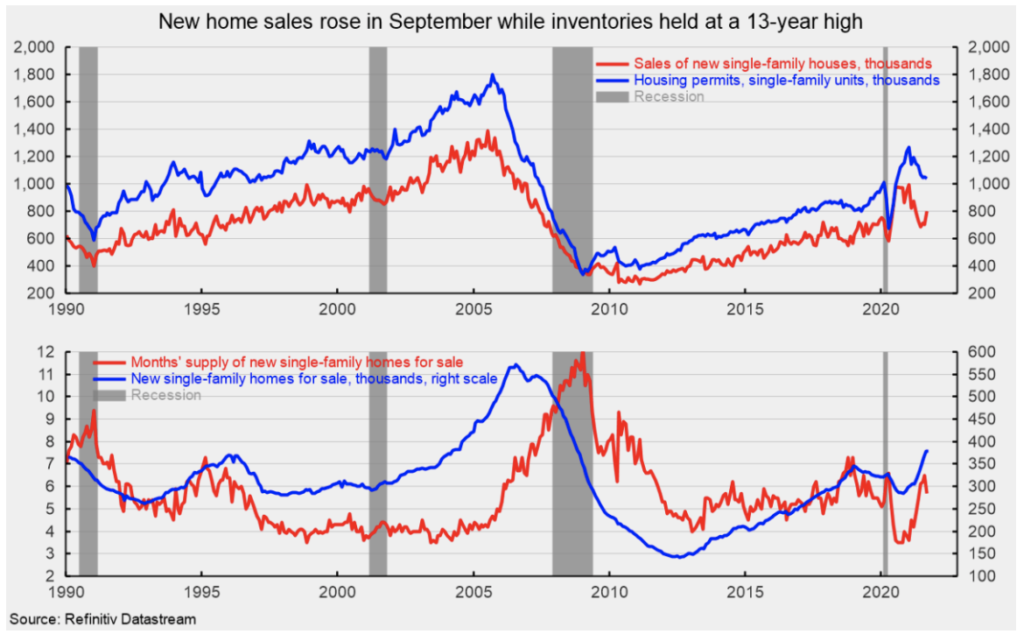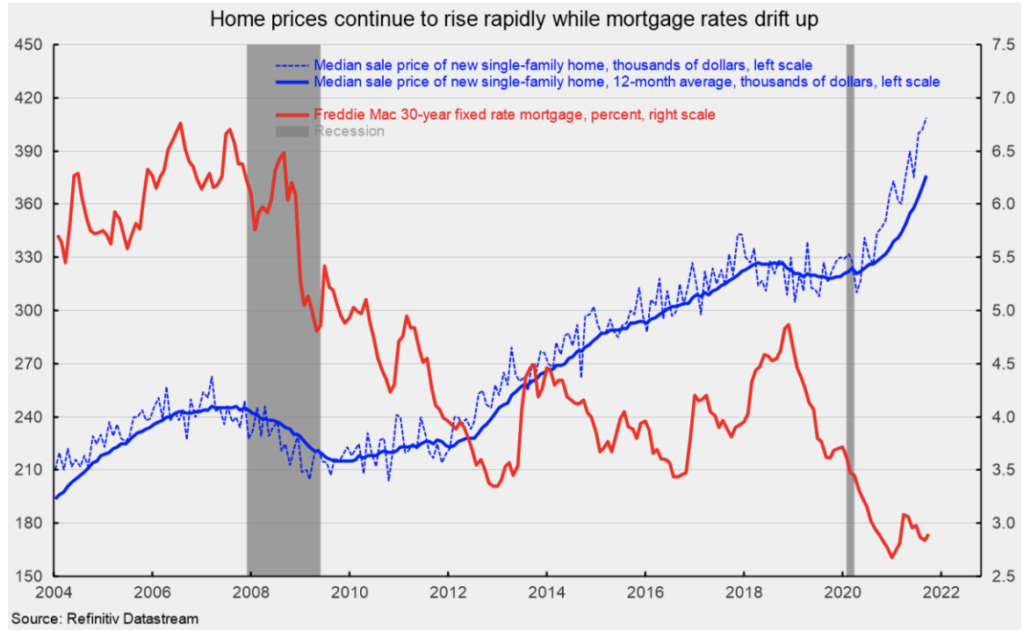
Sales of new single-family homes posted a strong gain in September, increasing 14.0% to 800,000 at a seasonally adjusted annual rate from a 702,000 pace in August. Despite the gain, sales are down 17.6% from the year-ago level and are 19.4% below the 993,000 pace in January (see top of first chart). The drop in new home sales since December has been matched by permits for future construction, though permits did not see a tick up in September (see top of first chart).
Sales of new single-family homes were up in three of the four regions of the country in September. Sales in the South, the largest by volume, rose 17.5%, while sales in the West gained 8.2%, and sales in the Northeast increased 32.3%. However, sales in the Midwest were off 1.5% for the month. From a year ago, sales were down between 11 and 34% in three of the four regions, but are up 7.9% in the Northeast.
Despite the strong gain in sales, the total inventory of new single-family homes for sale was unchanged at 379,000 in September, the highest level since October 2008 (see bottom of first chart), putting the month’s supply (inventory times 12 divided by the annual selling rate) at 5.7, off 12.3% from August but still 62.9% above the year-ago level (see bottom of first chart). The median time on the market for a new home fell in September, coming in at 3.2 months versus 3.6 in August.

Recent headwinds for the housing market include somewhat higher mortgage rates and sharply higher home prices. The average rate of a 30-year fixed-rate conforming mortgage was around 2.9% in September. The average rate is up from a low of 2.68 in December but lower than the 3.08% in March 2021. The average rate was as high as 4.87 in November 2018 (see second chart).
The median sales price of a new single-family home was $408,800 (see second chart), up from $344,400 in September 2020 (not seasonally adjusted). The gain from a year ago is 18.7 percent. On a 12-month average basis, the median single-family home price is at a record high (see second chart).
Record-high prices and somewhat higher mortgage rates are headwinds, forcing some buyers out of the market. However, the rise of more flexible working arrangements (ie, remote work) may provide some continued support for less dense housing. It is likely that these conditions will continue to impact the overall housing market and on balance, further reduce demand, leading to looser supply conditions and slower future price increases.
Originally published on the American Institute for Economic Research and reprinted here with permission.








